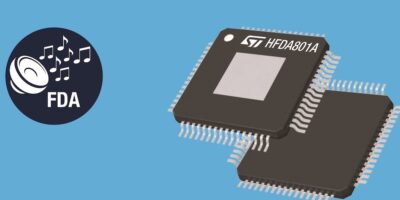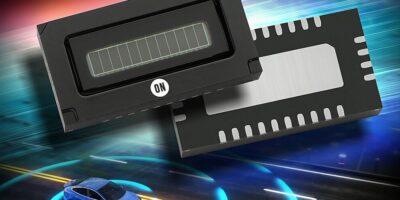The HFDA801A is a high-resolution audio amplifier that STMicroelectronics specifically designed for compact, cost-effective automotive applications.
The 2MHz switching pulse-width modulation (PWM) Class-D amplifier with a quad-bridge configuration integrates a DAC to ensure hi-fi quality sound under any load condition, with noiseless turn-on/turn-off and without creating any output artefacts. The signal-to-noise ratio is 121dB, with 120dB dynamic range and only 10μV output noise, for a high audio performance from an inexpensive small form factor component, said STMicroelectronics.
The feedback configuration with integrated L-C low-pass filter provides a wide flat frequency response up to 80kHz and minimises dependence on external components to reduce the bill of materials. The wide bandwidth allows use in high-definition (HD) audio applications, letting designers rely on excellent linearity and low distortion that are independent of the inductor and capacitor quality, the company added.
The architecture derives all required voltages internally, enabling the HFDA801A to draw its supply from the vehicle battery without the need for additional power converters. The amplifier’s load capabilities ensure stable performance even while driving high power on low impedance loads of 2Ohm on all four channels.
The integration of in-play diagnostics as well as a digital impedance meter and real-time load-current monitor, allow the HFDA801A to be used in safety-related audio applications that must demonstrate ASIL compliance, such as acoustic vehicle alerting systems (AVAS).
The HFDA801A is sampling now and will be in production in the second half of 2021. Please contact your ST sales office for pricing options and sample requests.







